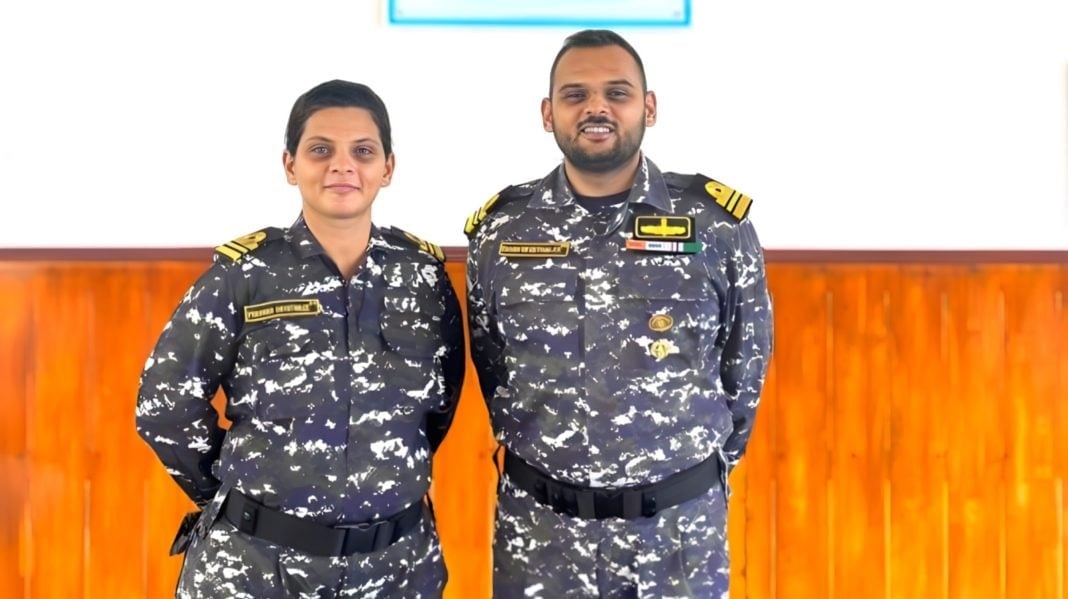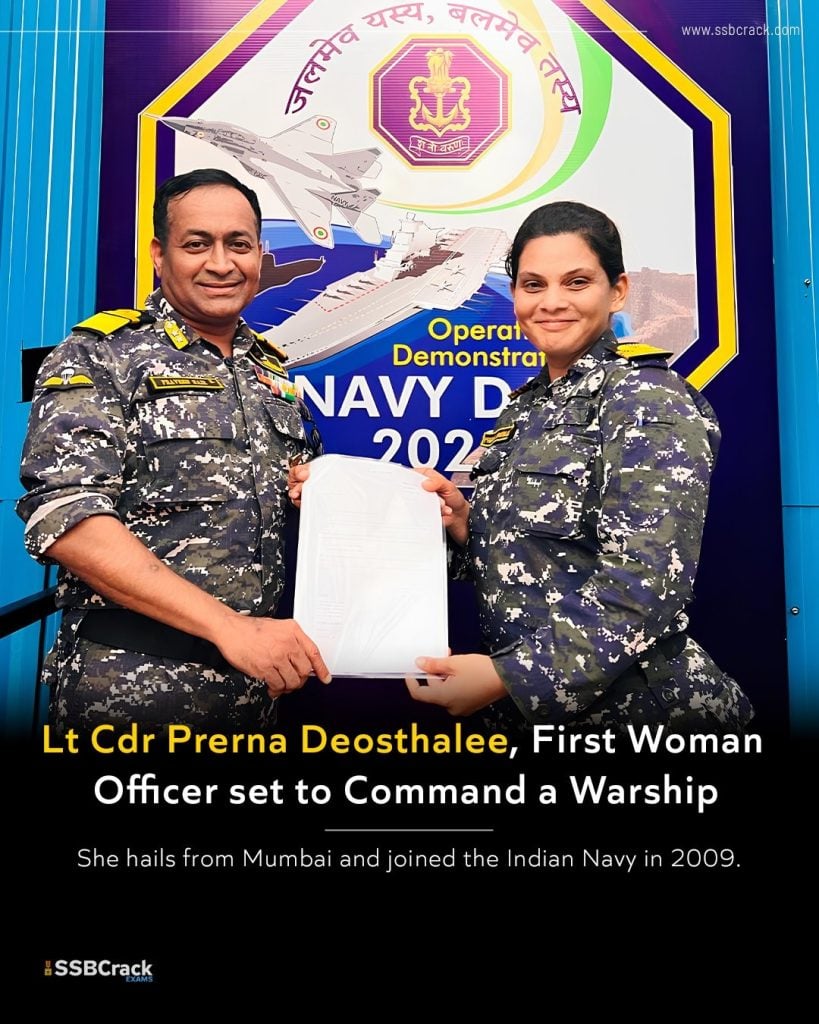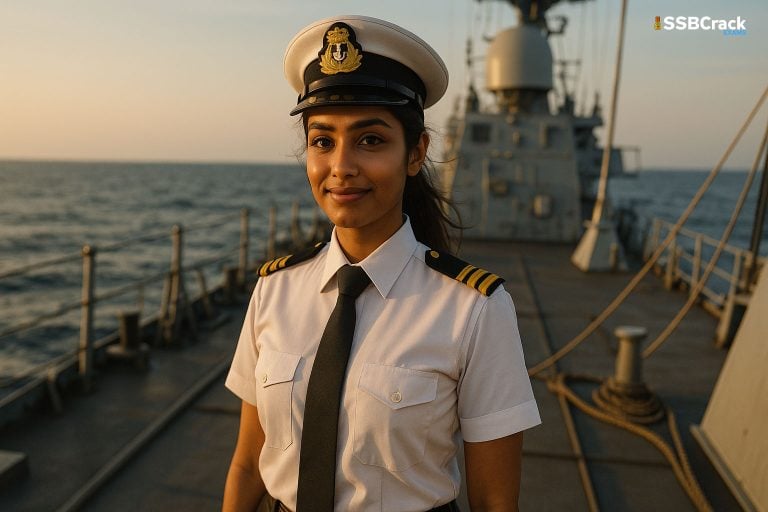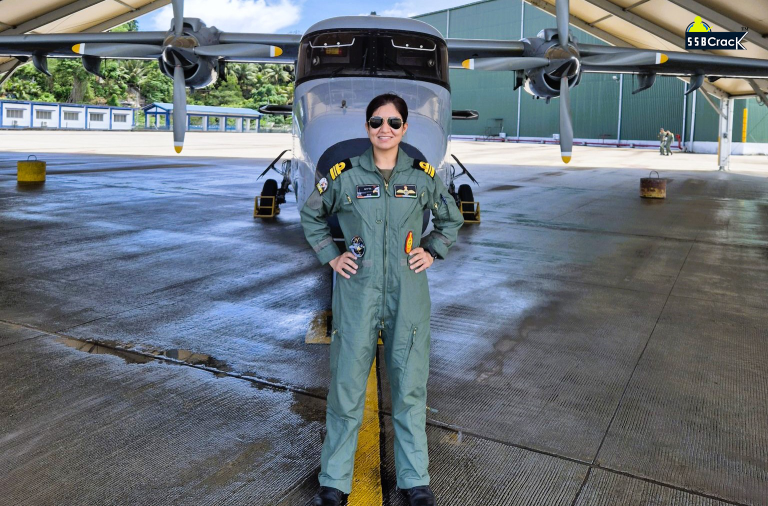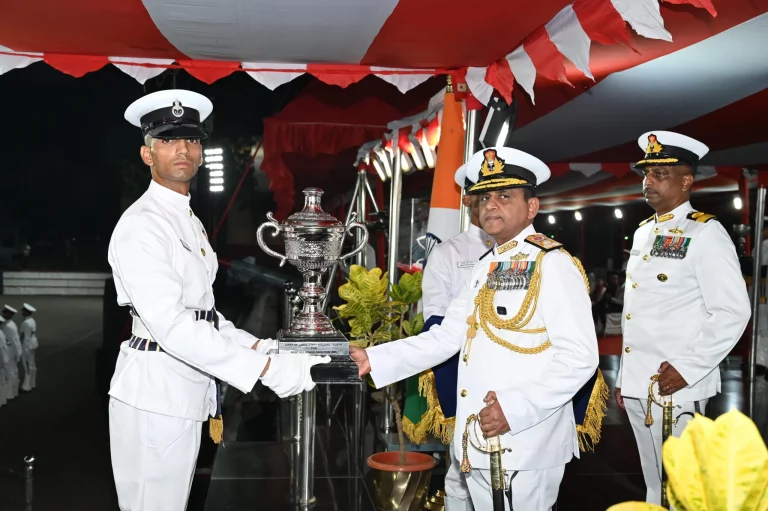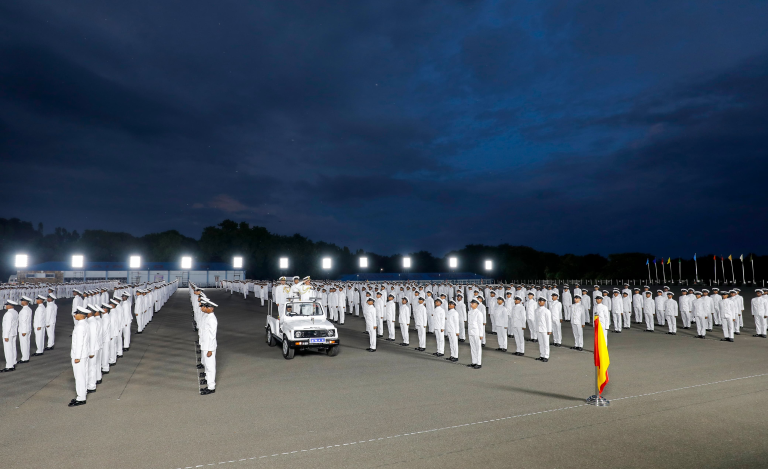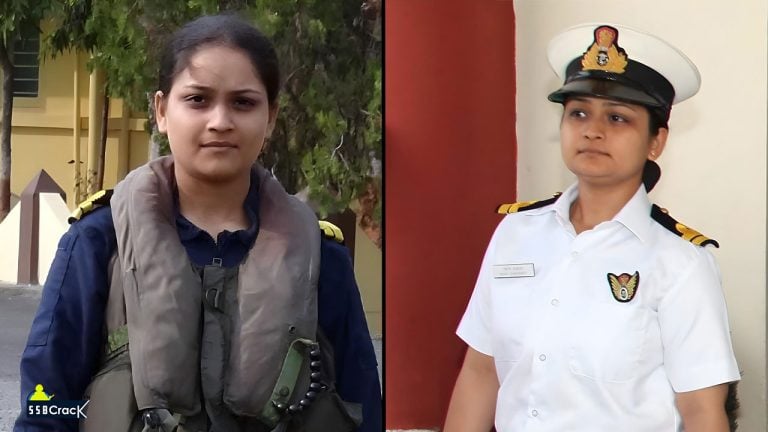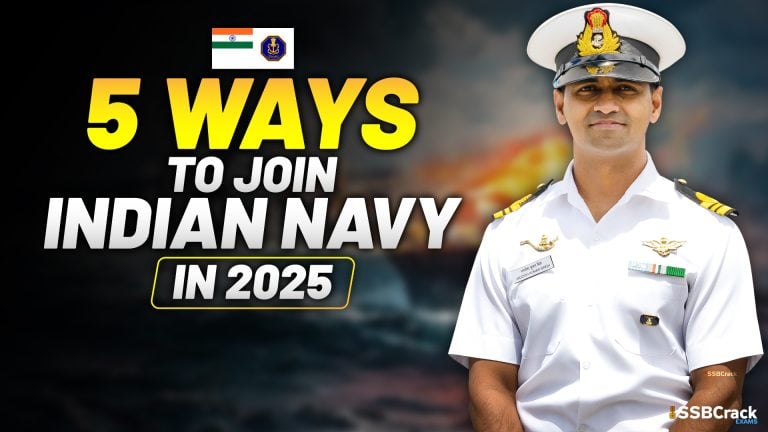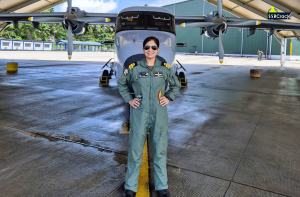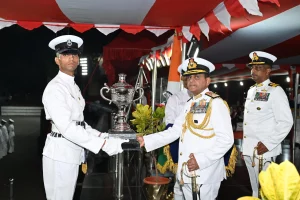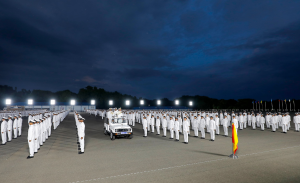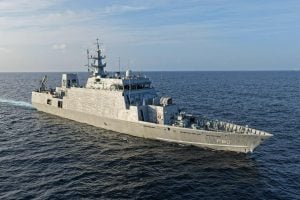In an unprecedented development within the Indian Navy, siblings Commander Prerna Deosthalee and Commander Ishan Deosthalee are simultaneously leading warships under the Western Naval Command. This remarkable achievement not only highlights their personal successes but also underscores the evolving dynamics of gender representation in military leadership roles.
Commander Prerna made history last year by becoming the first female officer in the Indian Navy to command a warship, taking the helm of INS Trinkat, a fast attack craft. Her groundbreaking journey signifies a critical step forward for inclusivity and gender equality within the naval forces. Following closely in her footsteps, Commander Ishan has recently been appointed to command INS Vibhuti, a Veer-class missile vessel known for its impressive operational capabilities.
This dual command by the Deosthalee siblings represents a significant moment for the Indian Navy, showcasing the force’s commitment to diversity and excellence. Their achievements serve as a beacon of inspiration for future generations, challenging stereotypes and redefining standards of service in the armed forces.
Also Read | Indian Coast Guard Navik GD Eligibility Criteria 2024, Age, Education
The Role of Women in the Indian Armed Forces
Historical Context
The inclusion of women in the Indian Armed Forces has evolved significantly over the decades. Initially, their roles were limited to non-combat positions, but the landscape has changed dramatically. Today, women serve in various capacities, including combat roles, and hold leadership positions across different branches of the military.
Recent Developments
The Indian Navy has made strides in promoting gender equality. The appointment of Commander Prerna Deosthalee as the first female officer to command a warship is a testament to this progress. It reflects a broader commitment to empowering women within the ranks and acknowledging their capabilities in leadership roles.
Impact on Future Generations
As more women ascend to leadership positions, they pave the way for future generations. The visibility of female leaders like Prerna and Ishan Deosthalee encourages young women to aspire to careers in the military, fostering a culture of inclusivity and breaking down traditional barriers.
Commander Prerna Deosthalee: Trailblazer in Naval Command
A Journey of Excellence
Commander Prerna Deosthalee’s ascent in the Indian Navy has been marked by dedication, resilience, and exceptional skill. Her journey began with rigorous training and a commitment to excel in a male-dominated field. As the first woman to command a warship, she has not only set a precedent but has also become a role model for aspiring female officers.
Commanding INS Trinkat
Currently, Commander Prerna leads INS Trinkat, a fast attack craft. Under her command, the vessel has undertaken various operational missions, showcasing its capabilities and the effectiveness of her leadership. Prerna’s command is characterized by strategic decision-making and a focus on operational readiness, further solidifying her reputation as a capable leader.
Recognition and Achievements
Prerna’s accomplishments have garnered recognition both within the Navy and beyond. Her leadership style, marked by inclusivity and collaboration, has earned her respect among her peers. As she continues to break barriers, her story resonates with many, inspiring them to pursue their dreams in the armed forces.
Commander Ishan Deosthalee: Upholding Naval Tradition
Following the Footsteps of a Pioneer
Commander Ishan Deosthalee’s recent appointment to command INS Vibhuti marks a significant milestone in his career. As the brother of Commander Prerna, Ishan is part of a unique narrative within the Indian Navy, where siblings command warships simultaneously. His journey reflects a dedication to upholding naval traditions while embracing modern operational practices.
Commanding INS Vibhuti
INS Vibhuti, a Veer-class missile vessel, is known for its advanced capabilities and strategic importance. Under Commander Ishan’s leadership, the vessel is expected to play a crucial role in various missions, including humanitarian assistance and disaster relief operations. His command style emphasizes teamwork, discipline, and operational excellence.
Contributions to Naval Operations
Ishan’s contributions to the Indian Navy extend beyond his command. He has been involved in various training exercises and operational missions, demonstrating his commitment to enhancing the Navy’s capabilities. His leadership is characterized by a focus on innovation and adaptability, essential traits in today’s dynamic maritime environment.
Also Read | Indian Coast Guard Recruitment 2024, Apply Offline Starts for Diploma holders
The Significance of Dual Command
Symbol of Progress
The simultaneous command of warships by the Deosthalee siblings is a powerful symbol of progress within the Indian Navy. It reflects the changing attitudes towards gender roles and leadership in the military, showcasing that competence and capability are not defined by gender.
Inspiring Future Leaders
The achievements of Prerna and Ishan serve as an inspiration for young aspirants, particularly women, who dream of serving in the armed forces. Their story highlights the importance of perseverance, dedication, and breaking through societal barriers to achieve one’s goals.
Strengthening Naval Operations
Having siblings in command positions can enhance collaboration and communication within the Navy. Their shared experiences and mutual support can lead to improved operational efficiency and a stronger commitment to the Navy’s mission.
Presidential Recognition and Support
Visit of President Droupadi Murmu
On November 7, President Droupadi Murmu visited the aircraft carrier INS Vikrant, where she witnessed a spectacular operational demonstration by the Indian Navy. Her presence underscored the importance of the Navy’s role in safeguarding national interests and its contributions to global humanitarian efforts.
Acknowledgment of Naval Achievements
During her address, President Murmu acknowledged the critical role of the Navy in maintaining maritime security and emphasized the importance of modernizing naval capabilities. She expressed her admiration for the achievements of the Indian Navy, including the successful rescue missions undertaken by its personnel.
Highlighting Humanitarian Efforts
The President shared a poignant example of the Indian Navy’s humanitarian efforts, recounting the rescue of a Bulgarian crew from a hijacked vessel. This incident not only exemplified the Navy’s commitment to global peace and security but also highlighted the professionalism and bravery of its personnel.
The Future of the Indian Navy
Expanding Operational Reach
As the Indian Navy continues to expand its operational reach, the contributions of leaders like Prerna and Ishan Deosthalee will be instrumental. Their leadership is a part of a broader strategy to enhance the Navy’s capabilities and readiness in a rapidly changing maritime landscape.
Embracing Innovation
The future of the Indian Navy will be characterized by innovation and adaptability. Embracing new technologies and operational strategies will be crucial in maintaining a competitive edge. Leaders who are open to change and capable of inspiring their teams will play a vital role in this transformation.
Commitment to Inclusivity
The Indian Navy’s commitment to inclusivity and diversity will continue to shape its future. By promoting women in leadership roles and fostering an environment of collaboration, the Navy can leverage the strengths of its diverse personnel to achieve its strategic objectives.
The Deosthalee Legacy
Inspiring Future Generations
The legacy of Commander Prerna and Commander Ishan Deosthalee will undoubtedly inspire future generations of naval officers. Their achievements serve as a reminder that dedication, hard work, and a commitment to excellence can lead to groundbreaking accomplishments in any field.
Breaking Stereotypes
By challenging traditional gender roles and stereotypes, the Deosthalee siblings are paving the way for a more inclusive and equitable environment within the armed forces. Their journey encourages others to pursue their dreams, regardless of societal expectations.
A Model for Leadership
The leadership styles of Prerna and Ishan reflect a modern approach to command, characterized by collaboration, respect, and a focus on operational effectiveness. Their ability to lead with integrity and purpose sets a standard for future leaders in the Indian Navy and beyond.
Also Read | Indian Coast Guard Salary 2024, In Hand Salary, Per Month Salary
Conclusion
The simultaneous command of warships by Commander Prerna and Commander Ishan Deosthalee marks a historic moment in the Indian Navy, symbolizing progress, inclusivity, and excellence. Their achievements reflect the Navy’s commitment to gender equality and the empowerment of women in leadership roles. As they continue to inspire future generations, the Deosthalee siblings exemplify the dynamic spirit of the Indian Navy, paving the way for a brighter future in maritime security.
FAQs
1. Who are the Deosthalee siblings?
Commander Prerna Deosthalee and Commander Ishan Deosthalee are siblings serving in the Indian Navy, both currently commanding warships.
2. What is the significance of their simultaneous command?
Their simultaneous command represents a historic milestone for gender representation in the Indian Navy and serves as an inspiration for future generations.
3. What roles do Prerna and Ishan command?
Commander Prerna commands INS Trinkat, a fast attack craft, while Commander Ishan commands INS Vibhuti, a Veer-class missile vessel.
4. How has the Indian Navy evolved regarding women in leadership?
The Indian Navy has made significant strides in promoting women to leadership roles, showcasing their capabilities and commitment to inclusivity.
5. What recognition has the Indian Navy received from the government?
President Droupadi Murmu has publicly acknowledged the Navy’s contributions to national security and humanitarian efforts during her visits and addresses.
